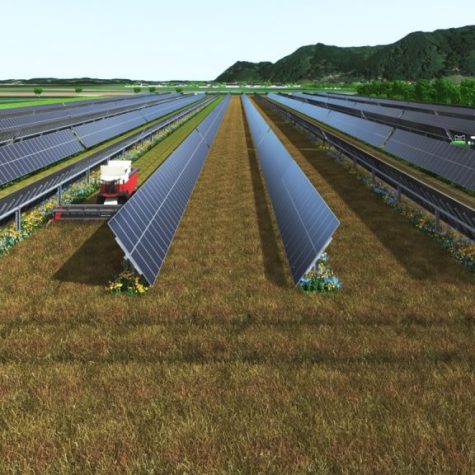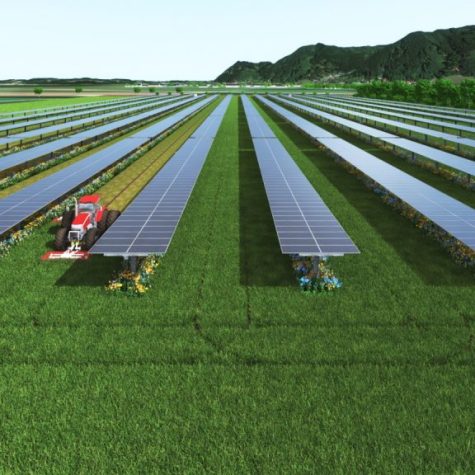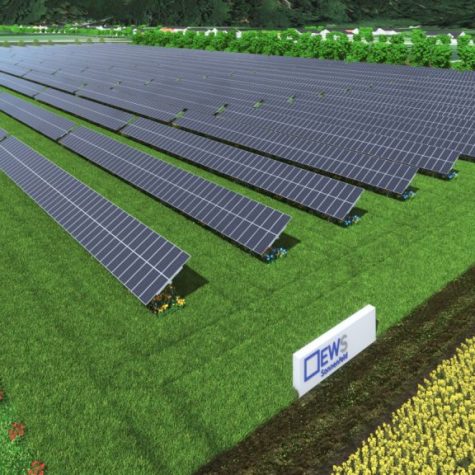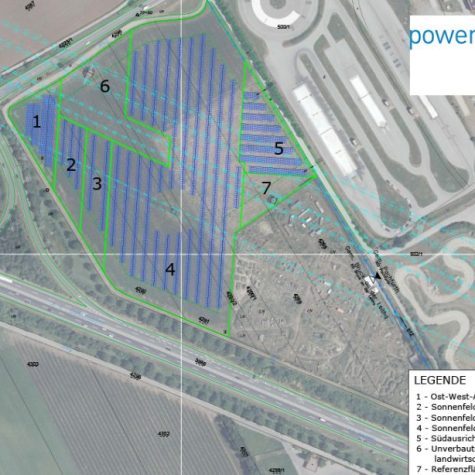The Sonnenfeld Bruck/Leitha is an agri-PV plant whose operating principle is based on the simultaneous harvesting of electricity and food and feed as well as additional increase in biodiversity. The PV modules are mounted on movable module tables that follow the course of the sun, and their ability to swivel guarantees mechanical, agricultural cultivation.
Between the agricultural rows (6, 9 and 12 m cultivation widths are being tested in the research project) there is a 2-metre flowering strip on which various local seed mixtures are being tested or their positive influence on species diversity and biodiversity is being investigated. Thus, the flowering strip is located below the PV panels, most of which are mounted on a pivoting axis at the height of 2.8m.
Key data of the PV systems:
Area of the entire plant
5 ha
Power for
400 households + 400 heat pumps + 400 e-cars
Area under cultivation for food
80 %
Land consumption for PV system
2 %
Flower strips for biodiversity
18 %
“This project is funded by the Climate and Energy Fund and is carried out under the program “Model and Lighthouse Photovoltaic Projects – Annual Program 2021″.”
The loss of area due to the PV system is absolutely minimized (is less than 2%).
Other advantages of the solar field:
- Additional revenues for agriculture
- Crisis-proof in the event of climate-related crop losses
- Regional, parallel production of electricity and foodstuffs
- Higher social acceptance due to least land loss (2%).
The aim is to use this system to find the perfect production conditions and methods (electricity + agriculture) – adapted to the site-specific a/biotic factors.
To achieve this goal, 8 research zones (FCs) will be established:
- 3 research zones with three different row spacings
- 2 research zones with various rigid, south-facing systems.
- 1 research zone with rigid east-west double tables
- 1 Research zone fallow
- 1 research zone agricultural culture
In addition, the specific additional yields when using bifacial modules (as opposed to monofacial) and power optimizers are investigated.
In times of increasing land scarcity, the Sonnenfeld offers an attractive solution thanks to its dual use and the resulting increase in land efficiency. The increasing droughts due to the climate crisis are counteracted by shading, reduced evaporation and improvement of the microclimate.
Project partner
![]()







